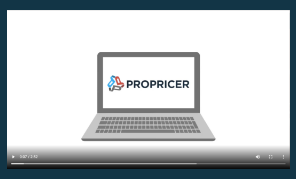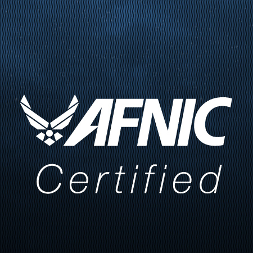How do you guarantee your Contract proposal will not only meet RFP requirements, but shine with innovation?
Pure and simple, it’s your approach. Your technical approach will determine whether you’re destined to make a profit on your contract award, break even, or be on the dismissal list before an award even takes place.
To start with, you have to break down each material task and provide supporting details.
Describe the work you’ll accomplish and any deliverables.
Develop a milestone chart and the duration of each milestone. Milestones include timeframes for preparation, delivery, review, and approval of all reports or manufactured components.
And here’s where traceability comes in: Identify all contract deliverables that are traceable to the milestone chart. But also be ready to identify the following for any manufactured component: time it takes to produce, who’s producing, when it’s received, how long it will be in operation, and an estimate on when the component may be retired.
Most of this goes for not only electrical components, but also hard-material components as well.
Agencies, you have your own forms of traceability to worry about. Like tracking specifically where your money is being spent, with whom, how often, and your ROI.
Sounds like an insurmountable job on both sides, right? Almost. Here are a few traceability dimensions that can help you, depending upon which Agency you serve—or which Agency you are. (1)
Traceability in DoD Contracts: ERP is Key
Defense Contractors manufacture high-dollar machinery with long lifespans—things like satellites, naval vessels, and laser systems.
Traceability in Department of Defense (DoD) contracts essentially means you need to know where manufacturing parts are, where they have been, who touched them, which machine processed them and how long that processing took.
As a Contractor, your focus is usually on optimizing processes and resources. And as an Agency, your goal is often the same.
An Enterprise Resource Planning (ERP) setup that integrates accounting and manufacturing systems—and that also helps you meet compliance requirements—can be your best friend when it comes to traceability of parts. Not to mention a huge help to finance, materials planning, and Quality Assurance (QA) processes.
A good ERP system can prompt your users for information, and in many cases, automatically capture information, say via a hand-held barcode scanner in your materials receiving area.
As if tracking serial and lot numbers on thousands or even millions of parts isn’t challenging enough, incorporating expected changes escalates your volume of data. At this juncture, Excel spreadsheets are out of the question. What you need is a system that maintains the contract type from setup, and also uses this structure to help users capture the data they need.
See how ProPricer contract proposal pricing & review software easily transfers data into & out of ERP systems here.
To top it off, all of this information must be auditable! You have to be able to capture all direct, indirect, allowable, and unallowable costs on a project-by-project basis, using detailed and standardized project costing rules, to meet the traceability requirements of any given contract.
Maintaining this manufacturing inventory system with tracking capabilities translates to traceability for every item, every transaction, every time. Ideally, your workflows also accommodate inspection requirements. ERP automation can enforce these inspections, proving that parts have been inspected prior to entering the system.
Which brings us to counterfeit parts.
Obviously, you want to avoid them, and the Defense Federal Acquisition Regulation Supplement (DFARS) regularly amplifies this message in its communications. Not only are your projects subject to risk, but your entire reputation is at stake should you be subject to an audit and found to be noncompliant.
And this doesn’t just apply to electronic parts. Any product or component can be subject to more far-reaching Defense Logistics Agency (DLA) requirements.
Sad to think you could lose a contract due to noncompliance of a minor component, when all of your electronic parts have met traceability requirements. But it happens.
Gladly, ERP automation can transform traceability from a tough, manual process to one you can master in a few clicks and keystrokes. (2)
Blockchain as the Backbone for Agency Traceability
How could a Government Agency lose track of $800 million? The DLA did just that, according to an internal audit that found its way to the press in February 2020.
The DLA isn’t the only one. Despite efforts to make Government spending more transparent—to both the Government itself and its taxpaying citizens—another wholistic audit found that 302 federal programs failed to report a whopping $619 billion in expenses over a period of just a few years.
Blockchain could solve these accounting problems and bring an unprecedented level of accuracy, security, and speed to federal record-keeping. By adopting it, the Government could eliminate supply chain traceability inefficiencies, and potentially save billions of dollars.
Blockchain is best known as the technology that serves as a digital foundation for cryptocurrencies like Bitcoin. And a blockchain’s applications go far beyond this use case. Essentially, blockchain is a tool for recording transactions—whether they are payments, contracts, or orders—and storing that information securely on thousands of computers through a large, shared database. While most blockchains are public, many industry organizations are adopting private blockchains to automate operations.
Blockchain’s underlying ledger technology can be difficult to get your head around. Think of it as a giant spreadsheet visible on a host of relevant laptops at once. People can document transactions in a cell, or "block," of the spreadsheet. After a set amount of time, that block is locked, and a new block—the next one in the "chain"— is opened for edits.
Since the locked blocks are viewable on thousands of computers, Blockchain is nearly impossible to hack. Altering a block on one computer wouldn't affect the others, so an accurate record of contacts is always maintained.
But back to the Government’s data issues. Even within a single Government Agency, data is currently often cloistered across a spectrum of databases in a variety of formats. It’s nearly impossible for officials to gain a comprehensive view of their contract spending. And establishing a view across Agencies? The Government hasn’t even attempted this.
Blockchain’s security and speed attributes, combined with its low operational overhead, makes the platform ideal to improve the public sector’s spend traceability.
Blockchain could enable the government to securely collect, store, process, and utilize the massive amounts of information it collects, thereby boosting cost effectiveness and transparency.
Blockchain ledgers also enable the creation of "smart contracts," which can automatically process transactions or information from Party A to Party B once the locked blocks show that Party B has performed a requested service for Party A. Blockchain would preserve a transparent record of every aspect of such transactions—with full auditability and traceability.
Agencies could use smart contracts to automate supply chain transactions with vendors or other offices—while also creating an instant, secure, and auditable record of those exchanges.
In light of the many unexplainable money losses throughout our Government’s Agency structures, it looks like their current spend traceability systems are in dire straits. Blockchain to the rescue. (3)
Transparency. A Critical P2P Traceability Component for Agencies
The ability to trace Contract expenses for supplies and services back to the budget stream that funded them? This is a long-term vision for Government Agencies to understand which Defense Contract vehicles are used to execute specific funds.
American taxpayers would love to see inside the federal system, to see how their money is being used. But how does an Agency achieve this level of transparency? Or can it?
It can, by designing procurement systems that capture specific data “keys” used to link information in disparate systems.
Currently, Procure to Pay (P2P) traceability is a top priority in many Agencies, yet realization of this goal could be a few years down the road. But it’s in the works.
Let’s look at some of the program’s objectives:
- Build a bridge between the financial & procurement entities’ data keys. Categorize budgets and spending, so Contracts can map to the right budget allocations.
- Respect the difference between how OCCs & PSCs should be treated. The financial community relies upon Object Class Codes (OCCs) when recording commitments, while the acquisition community utilizes Product Service Codes (PSCs) when issuing obligations. PSCs should be applied at the line-item level on purchase requests and OCCs are should be captured when recording obligations.
- Take advantage of the PSC Selection tool. Program managers, financial people, or contracting officers: Use this tool to determine the appropriate PSC or OCC to place on a purchase request, commitment, or contract at a line-item level. It helps create your crosswalk between PSC and OCC. Visit https://psctool.us. (4)
Sources
-
FDIC Tutorial: Preparing Technical Proposals for Government Contracting
-
Deltek.com: Manufacturing Traceability for those with DoD Contracts
-
CNBC.com article: Blockchain Could Save Federal Agencies Billions
-
DPC Website





